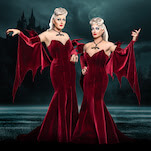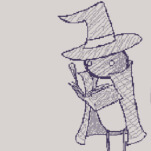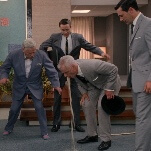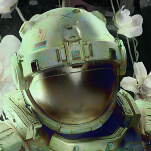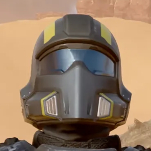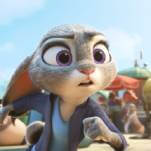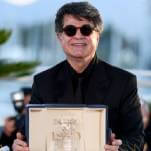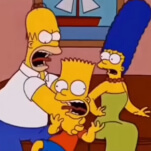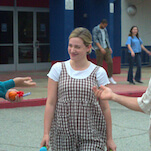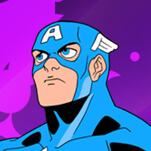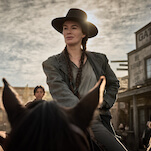Every two weeks, Comics Panel covers recent notable releases along the entire comics spectrum, from superhero/mainstream comics to graphic novels/art comics.
In his recent graphic novel Julio’s Day, Gilbert Hernandez condenses 100 years of a man’s life to 100 pages, giving as much weight to what he leaves out of the story as what he chooses to include. Hernandez’s new book, Marble Season (D&Q), does much the same, but on a different scale. Based on Hernandez’s own memories of growing up in the 1960s, Marble Season consists of 120 pages of loosely connected anecdotes about playing with action figures, reading superhero comics, collecting Mars Attacks cards, and getting into trouble. Like a lot of Hernandez’s comics over the past decade, Marble Season doesn’t feel particularly planned out. It’s more like Hernandez just sat down in front of a blank page and started drawing whatever he could recall about being a boy, without worrying too much about whether it amounted to a story, per se. Yet toward the end of the book, a narrative of sorts does emerge, exploring how kids grow up, lose some of their sense of the fantastic, and develop more self-consciousness.
The characters in Marble Season range in ages from pre-verbal to teenager. Missing from the picture? The adults, who exist off-panel as authority figures and cautionary examples. Like Peanuts, the world of Marble Season is one that parents have made, but that their children inhabit and organize, looking to one another first for cues on how to behave and what to value. Marble Season is by no means a heavy book. Its most dramatic moment comes when the main character, Huey, learns how to steal from a vending machine, then fears that he’s been found out. To these kids, though, everything is huge: a disagreement over which TV shows are cool, a friend moving away, a punishment, and, of course, puberty. Hernandez gets into his characters’ heads, making the trivial seem incredibly profound, while coaxing the reader toward the moment that Huey realizes that he’s reached the highest state of childhood enlightenment—the moment when he understands that his time at this age is almost up. It’s a beautiful finish to a beautiful book. [NM]
A handful of DC titles saw new creative teams in April, and while Charles Soule and Kano’s Swamp Thing #19 proved to be an intriguing start, it’s the outlier of the pack. Prospects looked grim for Action Comics #19 (DC) before the issue even hit the stands, with writer Andy Diggle departing the title because of “professional reasons.” The ongoing turmoil between the editors and the creators at DC has done significant damage to its output, and Diggle’s departure puts the company in a tough position as it prepares for the upcoming Man Of Steel film. Fans of the film looking to pick up Superman comics this summer will be able to choose from Scott Snyder and Jim Lee’s new Superman Unchained and Scott Lobdell’s contributions on both Action Comics and Superman, which doesn’t bode well for the latter two, considering Lobdell’s New 52 work.
That said, Diggle’s first and only issue (artist Tony Daniel will taking over scripting duties for the rest of the storyline) isn’t very impressive, pitting Superman against generic mecha villains for a story that doesn’t have any significant emotional stakes. The gatefold cover shows Superman punching out his best friend, Jimmy Olsen, but that moment turns out to just be a quick hallucination in the issue. The mecha attack is orchestrated by a melodramatically evil Lex Luthor, the first step in the type of plan readers have seen unfold over and over again in Superman comics. There aren’t that many original plots left in superhero comics, but even a conventional story can be given new depth by tapping into a real emotional place. Grant Morrison’s Action Comics run may have been on the oddball side, but it showed that there’s still plenty of potential in Superman. This issue moves away from that unpredictable sense of adventure for a flat story that lacks a strong hook. Whether Diggle or DC editorial is to blame, the publisher’s flagship character deserves better than this. [OS]
While Action Comics stumbles as it breaks away from what the previous creative team laid down, Red Hood And The Outlaws #19 (DC) struggles by staying overly faithful to what came before. New writer James Tynion IV picks up on plot threads established during Scott Lobdell’s run, sending Roy Harper and Starfire on a quest to find Jason Todd, who has run off after the events of the “Death Of The Family” crossover. Mico Suayan was the artist originally attached to Tynion’s run, and Suayan’s leaked cover for this issue revealed a Jason Todd who has had his face removed Joker-style, sparking questions as to what the title’s new direction was initially supposed to be. Was Jason’s scarring at the end of “Death Of The Family” supposed to stick? Was Tynion’s original story going to reflect that? That would help explain why #19 feels rushed, with Tynion turning to the ill-defined mystical elements of Lobdell’s run as Jason gets his bad memories removed via magic.
Both Jason and Roy are haunted by their pasts, and while Jason tries to erase his, Roy confronts his head-on when the villain Essence sabotages his dreams. All the people Roy has wronged in his life try to break his spirit, but he cuts them down using the techniques Jason has been teaching him. It’s basically a retread of what Lobdell did in his last issue, which had Jason confronting all the people he’s let down in hopes of recovering from the Joker’s attack. Clearly it didn’t work very well. What the issue does excel at is the action, with Julius Gopez turning in crisp artwork that falls somewhere between Shane Davis and former Red Hood artist Kenneth Rocafort.
Gopez draws dynamic movement and beautiful fantasy locales. (Although for God’s sake, can Starfire’s costume finally be changed already? Her costumes have always been overly sexual, but her current look covering only her nipples and crotch is ridiculous. At least George Perez’s original design kept Starfire’s breasts in place; unless she’s creating her own gravity in the New 52, her massive chest should be constantly smacking her in the face.) Tynion has been doing solid work on Talon and the Batman back-ups, and hopefully wiping Jason’s memory at the end of this issue means that the writer will get the opportunity to bring more of his voice to the title rather than working in Lobdell’s shadow. [OS]
Earning four Eisner nominations for its magnificent series Bandette, Monkeybrain Comics has firmly established itself as a force to be reckoned with in the comic-book industry. Theremin #1 (Monkeybrain) is the latest success from the publisher, a historical science-fiction series following Leon Theremin, the Russian engineer who invented the Theremin, a musical instrument used heavily in ’60s and ’70s pop and rock ’n’ roll music. In Curt Pires and Dalton Rose’s new ongoing, Theremin’s creation is both a musical instrument and a time-travel device, and that second quality ends up changing history quite a bit. The first issue begins with a thrilling sequence showing Theremin in full-on secret-agent mode, shooting Vladimir Lenin in the face, then using his device to escape from two cloaked KGB agents by jumping through time.
Pires and Rose ingeniously use comic-book panels as windows in time, and as Theremin shoots down the KGB agents, he freefalls in front of a series of panels showing the events of his life leading up to that point. Rose’s Phabula showed his talent at creating a vibrant fantasy world, and he proves that he’s just as adept at high-concept sci-fi storytelling with Theremin, creating a Metropolis-like world that has futuristic elements as conceived by a turn-of-the-20th-century culture. Pires cites the works of Grant Morrison and Matt Fraction as influences on Theremin, and that shows in this first issue, which makes creative use of the comic-book medium while building a layered story with a clear sense of direction. [OS]
And…
In Boaz Yakin’s films as a writer and director (which include Fresh and A Price Above Rubies), he’s shown a fascination with crime, urban living, family obligations, and orthodox Judaism. All of these themes intertwine in Yakin’s graphic novel Jerusalem: A Family Portrait (First Second), illustrated by Nick Bertozzi. Set in the titular city in the 1940s, Jerusalem deals with how the Zionist movement fought to establish a Jewish state at the same time war (and the Holocaust) raged across Europe. Focusing primarily on one volatile family, Yakin and Bertozzi build a complex narrative that’s exciting in its cinematic breadth. Yakin takes advantage of the comics format to tell a story that might’ve been prohibitively expensive to film, full of shootouts, explosions, and a large cast of vivid characters. In fact, Jerusalem is so film-like that at times it feels like it’s missing the necessary dimension of movement. But Bertozzi is a skilled comics artist with a simple but expressive style, which gives Yakin’s long, dialogue-free action scenes as much narrative momentum as his quieter conversations between loved ones. [NM]
Erik Evensen’s latest self-published graphic novel, The Beast Of Wolfe’s Bay (APR131235)—funded through Kickstarter—is just as movie-like as Yakin and Bertozzi’s Jerusalem, except that The Beast Of Wolfe’s Bay is more of a breezy B-horror picture. Evensen applies his clean, colorful style to the story of a doctoral candidate in paleoanthropology, who gets called in by a small-town police force to investigate a possible Bigfoot attack. As with Gods Of Asgard, The Beast Of Wolfe’s Bay is partly about the stubborn pull of mythology and folklore, to which Evensen adds some amusing observations about academia, along with a love story and a creepy backwoods mystery. The book is a few shades too conventional—aside from one surprise twist, it’s not too hard to see where it’s going—but it’s a fun read, with obvious insider insight into the pressure of trying to make a living as a scholar in an outré field. [NM]
Continuing Dark Horse’s revival of superhero properties like Ghost and Captain Midnight, the publisher has brought on crime novelist Duane Swierczynski and artist Eric Nguyen to reintroduce gritty urban vigilante X, an antihero with one eye and a whole lot of anger. Originally serialized in the pages of Dark Horse Presents, X #0 (Dark Horse) is a prologue to the new ongoing series by the same creative team, serving as a grisly introduction to the mysterious title character. Titled “The Pigs,” the story uses a recurring sausage motif to show how the corrupt have gorged themselves while the rest of Arcadia suffers, and is broken into three parts featuring X butchering a different mobster in new horrible ways. This one-shot is similar in tone to Greg Rucka’s recent Punisher run, giving the villains the dialogue to show how despicable they are, while leaving the protagonist largely silent so that his actions have even more impact. When X does crack wise before cutting off a mobster’s arm with a saw, it causes the reader to wonder just how together the hero actually is. Eric Nguyen nails the tone of Swierczynski’s plot, providing heavily shadowed visuals and choreographing brutal violence that is not for the squeamish. This prologue may not provide much backstory for X, but it succeeds in piquing interest in the character after this initial strike against Arcadia’s underworld. [OS]
Of a piece with the pop-art movement and the various Euro-cinema New Waves, Guy Peellaert’s mid-’60s comic strip The Adventures Of Jodelle (Fantagraphics)—scripted by Pierre Bartier—was a landmark in the maturation of the medium, and is now available in a new English translation, packaged with extended essays about Peellaert’s life and art. The essays—which at 80 pages take up more of the book than Jodelle—are this volume’s real selling point. It’s not that the original comics don’t hold up; they’re still a wild, psychedelic ride, telling the story of superstar spy in a garish, Americanized Roman Empire. But Jodelle looks even better when placed in the context of Peellaert’s entire oeuvre, which appropriated commercial art and pop-culture iconography with more overt intent than his American pop-art counterparts. Peellaert foregrounded the eroticism of advertising, and exposed how pulp imagery affects the public’s understanding of everything from politics to gender. And he did it without resorting to polemics. The Adventures Of Jodelle book—both the comic strip and the supplemental material—is a delight both visually and intellectually. [NM]
Originally published in Italian in 1979, the late Sergio Toppi’s Sharaz-de: Tales From The Arabian Nights (Archaia) is a phenomenal fusion of artist and subject, as overpowering now as it was when Toppi’s densely textured illustrations were influencing even American superhero comics. (Walt Simonson offers a glowing Toppi appreciation in the new Sharaz-de edition’s foreword, and the more avant-garde impulses of Frank Miller and Bill Sienkiewicz in the ’80s can be traced in part to Toppi.) 1001 Nights is one of world literature’s most famous “nesting” narratives, with stories embedded within other stories, all sprung from the imagination of a woman trying to keep her murderous husband entertained, in order to prolong her life. Toppi adapted some of the lesser-known tales, some in black-and-white and some in pale, painterly color; and his drawing style extends the nesting motif, as his elaborately rendered figures contain entire worlds within each wrinkle and fold. The folkloric nature of the original stories merges with Toppi’s stunning designs, giving Sharaz-de’s art the quality of ancient tapestries, endlessly unrolling. [NM]
Of DC’s digital-first titles, one title has quickly risen above the rest with its delightfully cheerful tone and gorgeous watercolor artwork: Batman: Li’l Gotham. Dustin Nguyen and Derek Fridolf’s holiday-centric series starring chibi-fied versions of Gotham’s heroes and villains has been a refreshing alternative to the increasingly bleak Bat-books of the New 52, and Batman: Li’l Gotham #1 (DC) collects the first two stories set during Halloween and Thanksgiving. With the cancellation of Art Baltazar and Franco’s Superman Family Adventures, DC is in need of some new all-ages entertainment, and Li’l Gotham delivers simple, adorable stories for the youngsters and heaps of visual Easter eggs for older Bat-readers. (It’s also the only place to find the now-deceased Damian Wayne.) Because the print editions take two of the digital landscape pages and put them on one portrait page, many of DC’s printed digital-first comics suffer from repetitive layouts, but Nguyen provides enough variation in his page design that it’s not an issue with Li’l Gotham. Hopefully the fact that the series has its foundation in digital means that it will have a long life, because Nguyen and Fridolf are creating a gateway comic for both beginning readers and established Gothamites. [OS]

